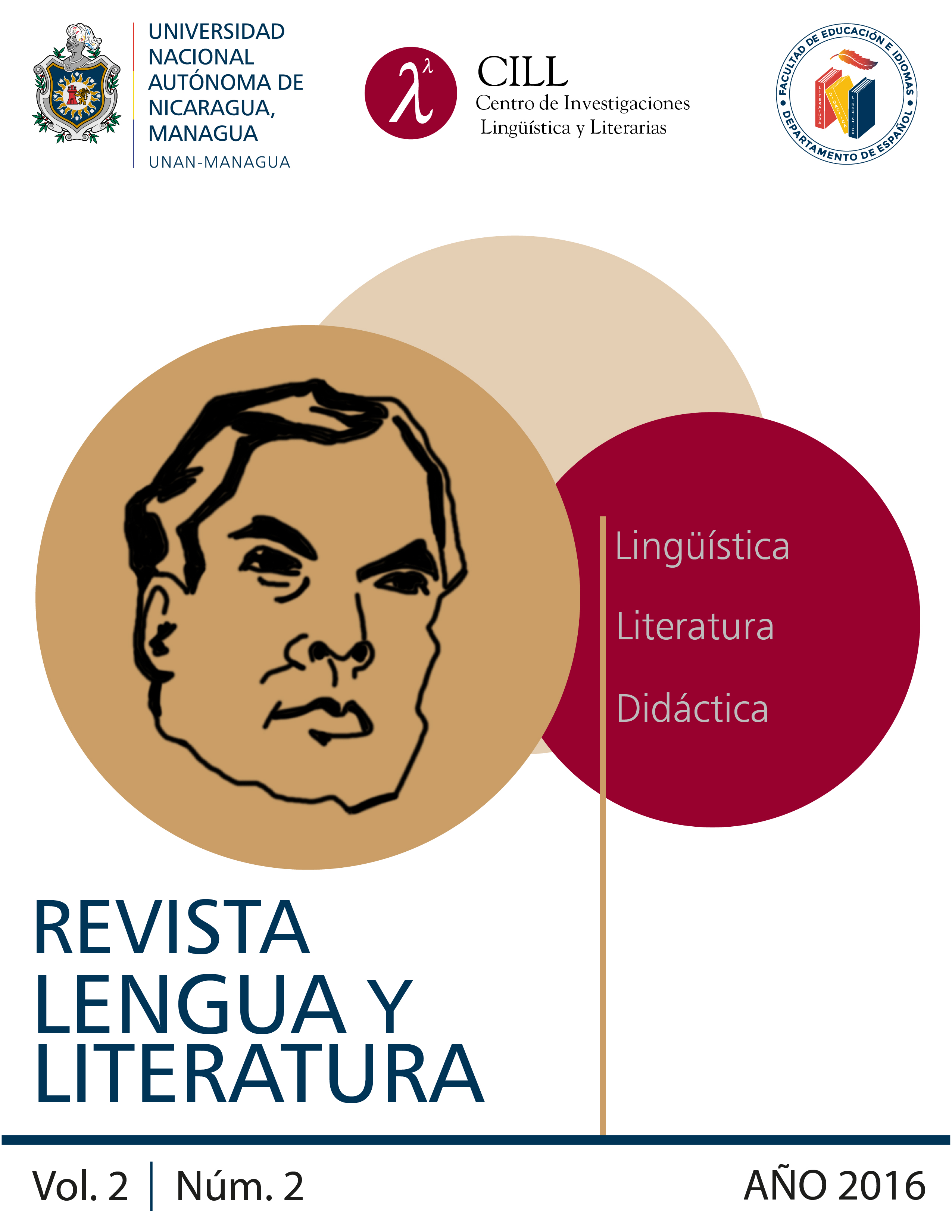Methodological strategies for Teaching textual coherence
quality of information, from a new perspective
DOI:
https://doi.org/10.5377.rll.v2i2.9354Abstract
The main objective of this research is to contribute to improve the teaching-learning process of written expression, and offer teachers a clearer view of the use of methods with a communicative approach that allow active and participatory classes, in which the macro-abilities of language, necessary for effective communication, are put into practice. It analyzes the main problems of textual coherence: quality of the information, presented by the diagnostic writings of the first year students of the career of Hispanic Language and Literature, the regular course and professionalization of the Department of Spanish. The difficulties detected served as a reference point for the elaboration and execution of a didactic project that had a positive impact on overcoming of them and in this way enhance the communicative and expressive resources that guarantee students an efficient academic, professional and social development. The results obtained were positive and from them you can say that it is It is possible to improve the texts elaborated through the realization of consensual writings and interesting, through a recursive process that involves planning threads, textualization, revision and correction, in which teachers and students actively participate and also allows access to theoretical materials, guidance guidelines, guides of evaluation and self-evaluation that facilitate the success of the task to be performed.
Downloads
References
Aznar y Cross. (1993). Lectura y coherencia textual (análisis de un texto narrativo) Comunicación y Lenguaje. N°. 17 pp. 16-28.
Aznar, E. y otros (1991). Coherencia textual y lectura. Barcelona: Horsori
Aznar, E., Cros, A. y Quintana, H. (1991). Coherencia Textual y Lectura. Barcelona: Horsori .
Boix, A. y otros. ( 1994 ). La expresión escrita. Barcelona: TEIDE.Bustos, G. (1996). La construcción de textos en Español, España: Varona.
Camps, A. y Castellón, M.( s.f ) (en prensa). Las Estrategias de Enseñanza y Aprendizaje en el pro-ceso de Composición Escrita.
Monereo C. y Solé I. (eds.). El asesoramiento psicopedagógico: una perspectiva profesional. Madrid: Alianza.
Camps, A. (1990). Modelos del proceso de redacción: algunas implicaciones para la enseñanza. Infancia y Aprendizaje N° 49. pp. 3 – 17.
Cassany, D. (1993 ). Describir el escribir. Barcelona: Paidós.
Cassany, D. (1994). Enseñar lengua. Barcelona: Graó.
Colomer T, Rivas T. y Utset, M. 1993. La Escritura por proyectos: Tú eres el autor. Aula de Innovación Educativa N°. 14 pp. –28.
Colomer, T. (1997). “La enseñanza y aprendizaje de la expresión escrita”. Signos N° 20 p.6.
Graves, D. 1987). Didáctica de la escritura, Madrid: Ministerio de Educación y ciencia.
Herrera, M.E. (Coord.). (1999) ¿ redactar ! México: Patria.
Kaifer, A. (1992). El análisis de textos escritos producidos en la escuela. Aula de Innovación N°. 2 pp. 29-31.
Del Río, M.A. (1995). Taller de Redacción l. México: Fuentes Impresores, S.A.
Lomas, C y Osoro, A. ( 1994 ). El Enfoque Comunicativo de la enseñanza de Lengua. Barcelona: Piados.
Martínez R. ( 1997 ). Conectando Textos. Barcelona: OCTAEDRO.62
Downloads
Published
How to Cite
Issue
Section
License
Copyright (c) 2016 Universidad Nacional Autónoma de Nicaragua, Managua

This work is licensed under a Creative Commons Attribution-NonCommercial-ShareAlike 4.0 International License.






